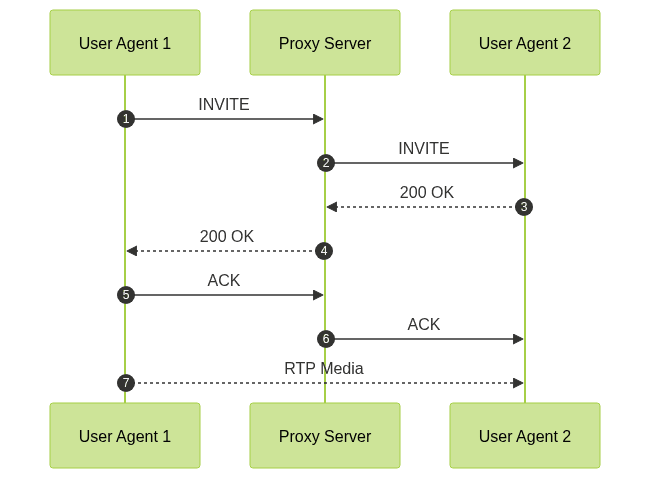Introduction to SIPP Protocol
The world of modern networking relies heavily on robust protocols that enable seamless communication across diverse networks. Among these, the sipp protocol and SIP protocol are frequently discussed, though often confused. SIPP (Simple Internet Protocol Plus) played a pivotal role in protocol evolution, while SIP (Session Initiation Protocol) is the backbone of contemporary internet telephony and real-time multimedia communications.
Understanding the sipp protocol and SIP protocol is crucial for network engineers, developers, and IT architects. These protocols shape how devices initiate, manage, and terminate sessions across IP-based networks, powering everything from VoIP calls to large-scale conferencing systems. This article delves deep into the history, architecture, implementation, and future of both the sipp protocol and SIP protocol, clarifying their distinctions and highlighting their ongoing relevance in 2025.
What is SIPP Protocol?
Background and History (SIPP Protocol 2%)
The sipp protocol (Simple Internet Protocol Plus) emerged in the mid-1990s as a response to the growing limitations of IPv4 addressing. Designed as a scalable and efficient successor, SIPP introduced expanded address space and enhanced routing capabilities. Its key milestone was the publication of
RFC 1710
in 1994, which outlined the SIPP IPng (IP Next Generation) framework.SIPP protocol's fundamental goal was to address the exhaustion of IPv4 addresses by increasing the address size from 32 bits to 128 bits—an architectural leap that paved the way for the modern IPv6 standard. Over time, SIPP evolved, with its core concepts and structure ultimately adopted and standardized as IPv6. Despite its historical significance, the sipp protocol is distinct from SIP (Session Initiation Protocol) and should not be conflated with the signaling protocols used in multimedia communications.
For developers working with modern communication platforms, understanding the evolution from SIPP to SIP is essential, especially when integrating solutions like a
Video Calling API
for real-time applications.SIPP vs SIP: Clearing the Confusion
A common source of confusion in networking circles arises from the similar acronyms: sipp protocol and SIP protocol. While SIPP protocol (Simple Internet Protocol Plus) was foundational to the development of IPv6, SIP protocol stands for Session Initiation Protocol and is defined in
RFC 3261
. The sipp protocol addressed IP routing and addressing, whereas SIP protocol manages signaling for multimedia sessions. Always distinguish between SIPP (an IP protocol precursor) and SIP (a signaling protocol for real-time communications) to avoid misunderstandings in technical discussions.Session Initiation Protocol (SIP): The Modern Standard
What is SIP Protocol? (SIP Protocol 2%)
The SIP protocol—Session Initiation Protocol—is a powerful, flexible signaling protocol used to establish, manage, and terminate real-time multimedia sessions over IP networks. Whether for voice over IP (VoIP), video conferencing, or instant messaging, the SIP protocol orchestrates how endpoints communicate, discover, and negotiate session parameters.
If you're building modern communication apps, leveraging a
Video Calling API
can streamline SIP protocol integration for both audio and video experiences.SIP protocol operates at the application layer and is defined by several key RFCs, most notably RFC 2543 (1999) and its successor, RFC 3261 (2002). These documents specify the syntax, semantics, and operational procedures for SIP, making it a foundational standard for modern VoIP and multimedia systems. SIP is designed to be simple, extensible, and transport-agnostic, supporting UDP, TCP, and TLS for secure transmissions.
Adopted globally, the SIP protocol has become the de facto standard for internet telephony, enabling interoperability across a wide range of devices, software, and services. Its modular design allows for rapid innovation and integration into enterprise telephony, call centers, and unified communications platforms in 2025 and beyond.
Key Features and Architecture of SIP Protocol
The SIP protocol is built as a text-based, application-layer protocol with a client-server architecture. Its main roles include user location, session setup, session management, and session termination. SIP endpoints—called user agents—can initiate or receive calls, acting as clients or servers depending on the transaction.
For developers seeking to add telephony features to their apps, exploring a
phone call api
can provide ready-to-use SIP-based calling capabilities.SIP relies on a series of requests and responses to negotiate and manage sessions. The protocol defines clear message flows and a transaction model for reliable communication and stateful processing.

This architecture ensures that SIP protocol can flexibly support a variety of multimedia applications, including audio, video, presence, and instant messaging. SIP endpoints can register with servers, enabling location services and seamless mobility across IP networks.
How Does SIP Protocol Work?
SIP Message Structure and Example (SIP Message 2%)
At the heart of the SIP protocol are SIP messages, which follow a standardized text-based format. SIP defines several message types, including INVITE (initiate call), ACK (acknowledge), BYE (terminate session), REGISTER (register endpoint), and OPTIONS (capability query).
If you want to quickly
embed video calling sdk
into your application, many solutions abstract SIP message handling for you, making integration seamless.A typical SIP message has a start line, headers, and an optional payload (commonly in SDP format for session description). Here is an example SIP INVITE message:
1INVITE sip:bob@example.com SIP/2.0
2Via: SIP/2.0/UDP pc33.example.com;branch=z9hG4bK776asdhds
3Max-Forwards: 70
4To: Bob <sip:bob@example.com>
5From: Alice <sip:alice@example.com>;tag=1928301774
6Call-ID: a84b4c76e66710@pc33.example.com
7CSeq: 314159 INVITE
8Contact: <sip:alice@pc33.example.com>
9Content-Type: application/sdp
10Content-Length: 142
11
12v=0
13o=alice 2890844526 2890844526 IN IP4 pc33.example.com
14s=Session SDP
15c=IN IP4 pc33.example.com
16t=0 0
17m=audio 49170 RTP/AVP 0
18- Start line: Indicates the SIP method (INVITE) and recipient
- Headers: Carry routing, identification, and negotiation information
- Payload: Usually an SDP (Session Description Protocol) body for media negotiation
This structure allows the SIP protocol to be both human-readable and easily parsed by machines, ensuring broad compatibility and extensibility.
SIP Call Flow and Transactions
The SIP protocol uses transactions to manage the exchange of messages between endpoints and servers. Each transaction consists of a request and one or more responses, ensuring reliable delivery and state tracking.
For iOS developers, implementing advanced call handling is possible by following a
callkit tutorial
that demonstrates SIP integration with native call interfaces.
This sequence demonstrates how SIP protocol transactions handle call setup, confirmation, and media exchange, with clear stateful interactions between all components.
Implementing SIP Protocol: Practical Guide
SIP APIs, Libraries, and Tools (SIP Protocol Implementation 2%)
There is a wealth of open-source libraries and tools available for developers interested in SIP protocol implementation. Popular choices include:
- sipp: A powerful SIP traffic generator and test tool, ideal for load testing and performance analysis
- pjsip: A comprehensive SIP stack with multimedia capabilities, widely used for embedding SIP in applications
- Asterisk: An open-source PBX that leverages SIP protocol for VoIP
- Kamailio / OpenSIPS: High-performance SIP servers for carrier-grade deployments
For cross-platform development,
flutter webrtc
is a valuable resource for building SIP-enabled video and audio calling apps using Flutter.To get started with SIP protocol, you can set up a simple call flow using the sipp tool:
1sipp -sn uac 192.168.1.100:5060
2This command simulates a SIP user agent client initiating a call to a SIP server at the specified IP address. Libraries like pjsip provide APIs for programmatic control over SIP sessions, suitable for custom applications and integrations.
If you're targeting Android, check out
webrtc android
guides for implementing SIP and WebRTC-based real-time communications.For those working with web technologies, a
javascript video and audio calling sdk
can simplify SIP protocol integration for browser-based applications.React Native developers can enhance their SIP-based apps with native call management by leveraging
react native callkeep
for seamless call handling on Android.SIP Security Considerations
As with any internet protocol, SIP protocol security is paramount. Common threats include spoofing (impersonating endpoints), denial-of-service (DoS) attacks, and eavesdropping on signaling or media streams.
To mitigate these risks, deploy SIP over encrypted transports:
- TLS (Transport Layer Security): Encrypts SIP signaling traffic
- SRTP (Secure Real-time Transport Protocol): Secures media streams (voice, video)
Implement strong authentication, monitor traffic for anomalies, and keep SIP software up-to-date to defend against evolving threats in 2025.
SIPP Protocol in the Context of Protocol Evolution
The sipp protocol (SIPP IPng) was instrumental in the transition from IPv4 to IPv6, influencing the design of modern internet protocols. Its expanded address scheme, streamlined header, and focus on scalability are evident in today’s IPv6 standard. While no longer in active use, the legacy of sipp protocol endures in the fundamental structure and capabilities of contemporary networking.
Industry Standards and Interoperability
Adoption of the SIP protocol is driven by industry bodies like the SIP Forum, IETF, and initiatives such as SIPconnect. These organizations establish SIP industry standards, ensuring interoperability between hardware, software, and network providers. Adhering to SIP protocol specifications is critical for seamless integration and future-proof deployments in enterprise and carrier environments.
Conclusion
The journey from sipp protocol (SIPP IPng) to the modern SIP protocol illustrates the rapid evolution of networking technologies. While SIPP laid the groundwork for IPv6, SIP protocol remains the cornerstone of real-time communications in 2025. As the demand for scalable, secure, and interoperable multimedia sessions grows, understanding these protocols is vital for anyone building the next generation of networked applications.
Ready to build your own SIP-powered communication platform?
Try it for free
and start integrating robust audio and video calling features today.Want to level-up your learning? Subscribe now
Subscribe to our newsletter for more tech based insights
FAQ